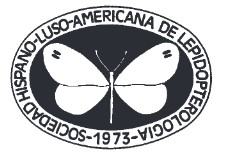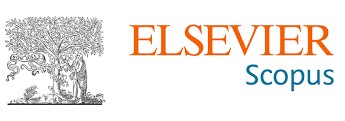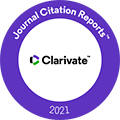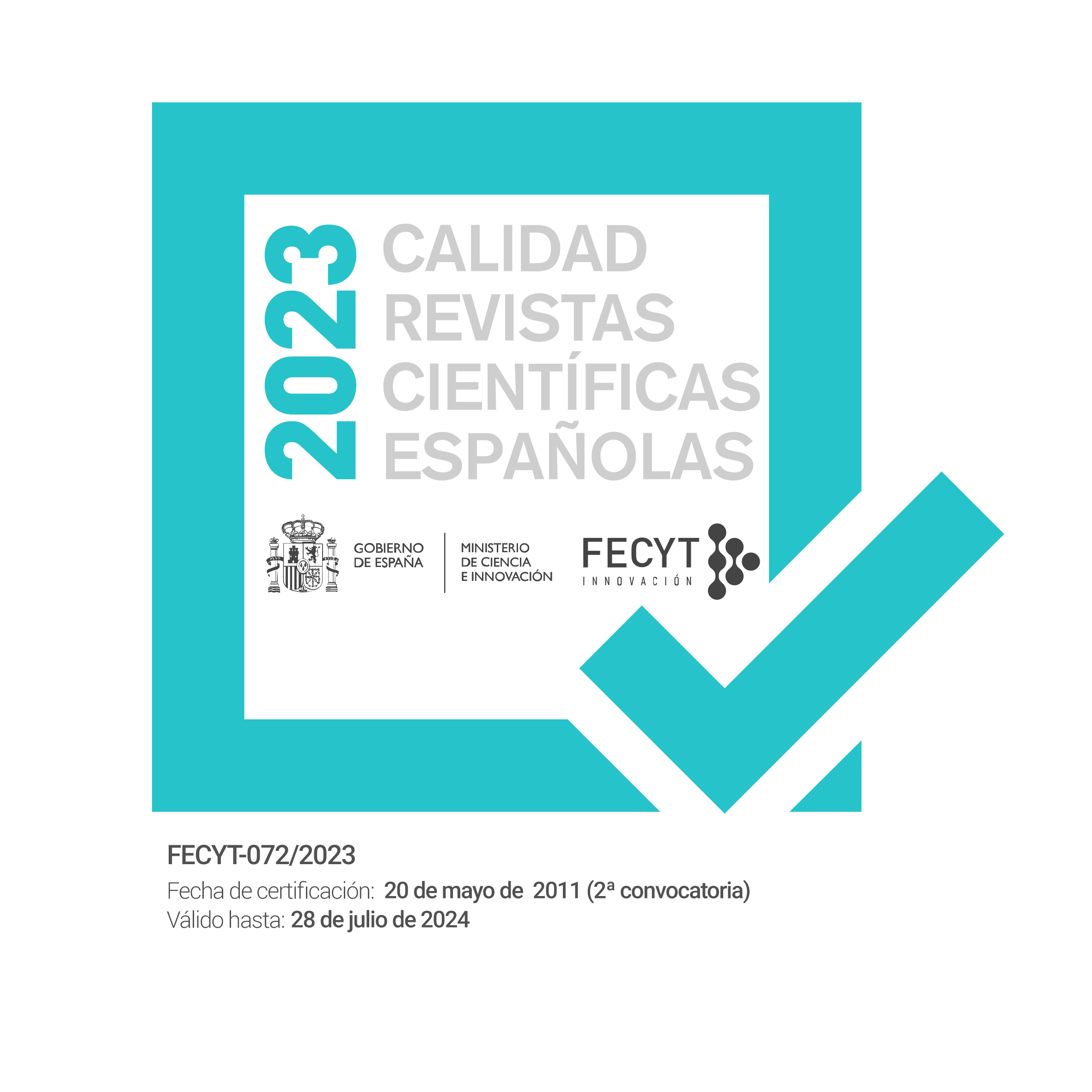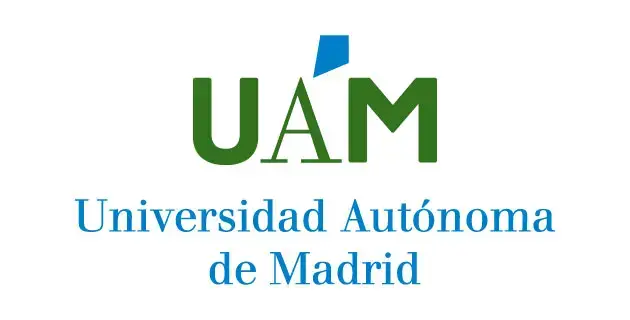First hostplant and last instar of Hydropionea fenestralis Barnes & McDunnough, 1914 in the Perote Valley, Mexico (Lepidoptera: Crambidae)
DOI:
https://doi.org/10.57065/shilap.952Parole chiave:
Lepidoptera, Crambidae, COI DNA barcode, seed feeder larvae, level of damage, Asparagales, Hydropionea, distribution, MexicoAbstract
We identified Hydropionea fenestralis Barnes & McDunnough, 1914 feeding on seeds of fruits of Agave salmiana var. ferox (K. Koch) Gentry and A. salmiana subsp. salmiana (Asparagaceae), based on DNA barcode and adult-stage morphology. This is the first host plant record, the first record last instar, and also constitutes the first Lepidoptera seed borer associated with Agave species in Mexico. The Agave variety and subspecies are used for the production of traditional fermented beverages called pulque, the economic and cultural base of the region. The mean percentage of fruit damage ranges from 13.9±19.9% to 33.2±2% in A. salmiana var. ferox and A. salmiana subsp. salmiana, respectably. Molecular evidence confirms the distribution of H. fenestralis in central Mexico in the states of Veracruz and Puebla, expanding the known geographic range of the species. This record seems to be an unusual host plant for the current phylogenetic position of H. fenestralis within the Glaphyriinae subfamily, whose larvae feed preferably Brassicales plants.
Downloads
Statistiche globali ℹ️
|
942
Visualizzazioni
|
205
Download
|
|
1147
Totale
|
|
Riferimenti bibliografici
Barnes, W., & McDunnough, J. (1914). Some new North American Pyraustinae. Contributions to the Natural History of the Lepidoptera of North America, 2(6), 224-250.
Delgado-Lemus, A., Torres, I., Blancas, J., & Casas, A. (2014). Vulnerability and risk management of Agave species in the Tehuacán Valley, México. Journal of Ethnobiology and Ethnomedicine, 10(1), 1-15. https://doi.org/10.1186/1746-4269-10-53 PMid:24994025 PMCid:PMC4106216 DOI: https://doi.org/10.1186/1746-4269-10-53
Felsenstein, J. (1985). Confidence limits on phylogenies: an approach using the bootstrap. Evolution, 39(4), 783-791. https://doi.org/10.2307/2408678 PMid:28561359 DOI: https://doi.org/10.1111/j.1558-5646.1985.tb00420.x
Figueroa-Castro, P., López-Martínez, V., Toledo-Hernández, V. H., & Rifkind, J. (2017). Primer registro del entomófago Enoclerus zonatus (Coleoptera: Cleridae) asociado con el quiote de maguey mezcalero en Guerrero, México. Revista Mexicana de Biodiversidad, 88(2), 467-470. https://doi.org/10.1016/j.rmb.2017.03.025 DOI: https://doi.org/10.1016/j.rmb.2017.03.025
García-Mendoza, A. (2002). Distribution of agave (Agavaceae) in México. Cactus and Succulent Journal, 74(4), 177-188.
Garrido, G. Y., & Nava-Bringas, M. E. (2017). Descripción del Valle de Perote. In A. Ochoa-Martínez, editor. Valle de Perote. Aspectos bioclimáticos y socioeconómicos (pp. 19-23). IETECArana Editores.
GBIF (2024). Hydropionea Hampson, 1917. http://www.gbif.org/species/1883821
Hajibabaei, M., Janzen, D. H., Burns, J. M., Hallwachs, W., & Hebert, P. D. (2006). DNA barcodes distinguish species of tropical Lepidoptera. Proceedings of the National Academy of Sciences, 103(4), 968-971. https://doi.org/10.1073/pnas.0510466103 PMid:16418261 PMCid:PMC1327734 DOI: https://doi.org/10.1073/pnas.0510466103
Hall, T. A. (1999). BioEdit: a user-friendly biological sequence alignment editor and analysis program for Windows 95/98/NT. Nucleic acids symposium series, 41(41), 95-98.
Hopkins, R. J., van Dam, N. M., & van Loon, J. J. (2009). Role of glucosinolates in insect-plant relationships and multitrophic interactions. Annual review of entomology, 54, 57-83. https://doi.org/10.1146/annurev.ento.54.110807.090623 PMid:18811249 DOI: https://doi.org/10.1146/annurev.ento.54.110807.090623
Janzen, D. H., & Hallwachs, W. (2009). Dynamic database for an inventory of the macrocaterpillar fauna, and its food plants and parasitoids, of Area de Conservación Guanacaste (ACG), northwestern Costa Rica. http://janzen. sas. upenn. edu.
Jiménez-Pérez, N. D. C., Hernández-Jiménez, O. A., & García-Mendoza, A. J. (2021). Agave guadarramae (Asparagaceae: Agavoideae), una especie nueva del sureste de México. Revista Mexicana de Biodiversidad, 92(agosto-septiembre). https://doi.org/10.22201/ib.20078706e.2021.92.3726 DOI: https://doi.org/10.22201/ib.20078706e.2021.92.3726
Kala, C., & Khan, N. A. (2020). Isolation and characterization of isopropyl isothiocyanate isolated from seeds of Drypetes roxburghii wall and its anti-platelet and anti-thrombotic activity. Scientific African, 10, e00658. https://doi.org/10.1016/j.sciaf.2020.e00658 DOI: https://doi.org/10.1016/j.sciaf.2020.e00658
Kimura, M. (1980). A simple method for estimating evolutionary rates of base substitutions through comparative studies of nucleotide sequences. Journal of Molecular Evolution, 16, 111-120. https://doi.org/10.1007/ BF01731581 PMid:7463489 DOI: https://doi.org/10.1007/BF01731581
Laguerre, M. (2014). Partial revision of the genus Homoeocera Felder, 1874, and description of three new species. Antenor, 1(2), 153-172.
Landry, B., Basset, Y., Hebert, P. D., & Maes, J. M. (2020). On the Pyraloidea fauna of Nicaragua. Tropical Lepidoptera Research, 30(2), 93-102.
Magallán-Hernádez, F., & Hernández-Sandoval, L. (2000). La familia Agavaceae en el estado de Querétaro, México. Botanical Sciences, 66, 103-112. https://doi.org/10.17129/botsci.1616 DOI: https://doi.org/10.17129/botsci.1616
Mally, R., Hayden, J., Neinhuis, C., Jordal, B., & Nuss, M. (2019). The phylogenetic systematics of Spilomelinae and Pyraustinae (Lepidoptera: Pyraloidea: Crambidae) inferred from DNA and morphology. Arthropod Systematics & Phylogeny, 77, 141-204.
Martínez-Salvador, M., Valdez-Cepeda, R., Arias, H. R., Beltrán-Morales, L. F., Murillo-Amador, B., Troyo-Diéguez, E., & Ortega-Rubio, A. (2005). Distribution and density of maguey plants in the arid Zacatecas Plateau, Mexico. Journal of Arid Environments, 61(4), 525-534. https://doi.org/10.1016/j.jaridenv.2004.10.002 DOI: https://doi.org/10.1016/j.jaridenv.2004.10.002
Munroe, E., Becker, V. O., Shaffer, J. C., Shaffer, M., & Solis, M. A. 1995. Pyraloidea, (pp. 34-105). In J. B. Heppner (ed.), Atlas of Neotropical Lepidoptera. Checklist: part 2: Hyblaeoidea - Pyraloidea - Tortricoidea. Scientific Publishers, Inc., Gainesville.
Munroe, E., & Solis, M. A. (1999). The Pyraloidea. In N. P. Kristensen. Handbook of Zoology (Vol. 35, pp. 231-256). Walter de Gruyter. https://doi.org/10.1515/9783110804744.233 DOI: https://doi.org/10.1515/9783110804744.233
Nuss, M., Landry, B., Mally, R., Vegliante, F., Tränkner, A., Bauer, F., Hayden, J., Segerer, A., Schouten, R., Li, H., Trofimova, T., Solis, M. A., De Prins, J., & Speidel, W. (2003-2022) Global Information System on Pyraloidea. https:// www.pyraloidea.org.
Powell, J. A., & Opler, P. A. (2009). Moths of western north America (Vol. 64). Berkeley University of California Press. https://doi.org/10.1525/california/9780520251977.001.0001 DOI: https://doi.org/10.1525/california/9780520251977.001.0001
Regier, J. C., Mitter, C., Solis, M. A., Hayden, J. E., Landry, B., Nuss, M. Simonsen T. J., Yen, S. H., Zwick A., & Cummings, M. P. (2012). A molecular phylogeny for the pyraloid moths (Lepidoptera: Pyraloidea) and its implications for higher-level classification. Systematic Entomology, 37(4), 635-656. https://doi.org/10.1111/j.1365-3113.2012.00641.x DOI: https://doi.org/10.1111/j.1365-3113.2012.00641.x
Reynoso-Santos, R. (2012). Identificación taxonómica de agaves (Agave ssp.) utilizados para la elaboración del licor comiteco en Chiapas, México. Agro Productividad, 5(4): julio-agosto.
Rodman, J. E., Soltis, P. S., Soltis, D. E., Sytsma, K. J., & Karol, K. G. (1998). Parallel evolution of glucosinolate biosynthesis inferred from congruent nuclear and plastid gene phylogenies. American Journal of Botany, 85(7), 997-1006. https://doi.org/10.2307/2446366 PMid:21684983 DOI: https://doi.org/10.2307/2446366
Rodríguez, W. D., Navarrete-Heredia, J. L., Vasquez-Bolanos, M., Rodríguez, R., Briceño-Félix, G. A., Blanco, J. M. C., & Ruiz-Cancino, E. (2019). Insects associated with the genus Agave spp. (Asparagaceae) in Mexico. Zootaxa, 4612(4), 451-493. https://doi.org/10.11646/zootaxa.4612.4.1 PMid:31717037 DOI: https://doi.org/10.11646/zootaxa.4612.4.1
Rojas, G. A., Solano, J. P. L., & Pérez, J. E. R. (2007). Diversidad genética en poblaciones de agaves pulqueros (Agave spp.) del nororiente del Estado de México. Revista Fitotecnia Mexicana, 30(1), 1-12. https://doi.org/10.35196/rfm.2007.1.1 DOI: https://doi.org/10.35196/rfm.2007.1.1
Saitou, N., & Nei, M. (1987). The neighbor-joining method: a new method for reconstructing phylogenetic trees. Molecular Biology and Evolution, 4(4), 406-425.
Scholtens, B. G., & Solis, M. A. (2015). Annotated check list of the Pyraloidea (Lepidoptera) of America North of Mexico. ZooKeys, 535, 1. https://doi.org/10.3897/zookeys.535.6086 PMid:26668552 PMCid:PMC4669914 DOI: https://doi.org/10.3897/zookeys.535.6086
Solis, M. (2007). Phylogenetic studies and modern classification of the Pyraloidea (Lepidoptera). Revista Colombiana de Entomología, 33(1), 1-8. https://doi.org/10.25100/socolen.v33i1.9306 DOI: https://doi.org/10.25100/socolen.v33i1.9306
Soltis, P. S., & Soltis, D. E. (2004). The origin and diversification of angiosperms. American Journal of Botany, 91(10), 1614-1626. https://doi.org/10.3732/ajb.91.10.1614 PMid:21652312 DOI: https://doi.org/10.3732/ajb.91.10.1614
Tamura, K., Stecher, G., & Kumar, S. (2021). MEGA11: molecular evolutionary genetics analysis version 11. Molecular Biology and Evolution, 38(7), 3022-3027. https://doi.org/10.1093/molbev/msab120 PMid:33892491 PMCid:PMC8233496 DOI: https://doi.org/10.1093/molbev/msab120
Trejo, L., Reyes, M., Cortés-Toto, D., Romano-Grande, E., & Muñoz-Camacho, L. L. (2020). Morphological diversity and genetic relationships in pulque production agaves in Tlaxcala, Mexico, by means of unsupervised learning and gene sequencing analysis. Frontiers in Plant Science, 11, 524812. https://doi.org/10.3389/fpls.2020.524812 PMid:33013957 PMCid:PMC7505951 DOI: https://doi.org/10.3389/fpls.2020.524812
Vasconcelos, S. T. C., Posadas, L. D. M. R., Moya, E. G., Villa, M. S., & Huerta, N. C. (2020). crecimiento y tasa de intercambio de CO2 de maguey pulquero (Agave salmiana Otto ex Salm-Dyck) obtenido por semilla. Agrociencia, 54(7), 911-926. https://doi.org/10.47163/agrociencia.v54i7.2242 DOI: https://doi.org/10.47163/agrociencia.v54i7.2242
World Flora Online (2024). Available on http://www.worldfloraonline.org.
##submission.downloads##
Pubblicato
Come citare
Fascicolo
Sezione
Licenza
Copyright (c) 2024 Rogelio Lara-González, Luis A. Lara-Pérez, Ángel I. Ortiz-Ceballos

TQuesto lavoro è fornito con la licenza Creative Commons Attribuzione 4.0 Internazionale.
L'autore mantiene i suoi diritti di marchio e di brevetto su qualsiasi processo o procedura contenuta nell'articolo.
L'autore conserva il diritto di condividere, distribuire, eseguire e comunicare pubblicamente l'articolo pubblicato su SHILAP Revista de lepidopterología, con il riconoscimento iniziale della sua pubblicazione su SHILAP Revista de lepidopterología.
L'autore conserva il diritto di pubblicare successivamente il suo lavoro, dall'utilizzo dell'articolo alla pubblicazione in un libro, a condizione che ne indichi la pubblicazione iniziale su SHILAP Revista de lepidopterología.
Ogni invio a SHILAP Revista de lepidopterología deve essere accompagnato dall'accettazione del copyright e dal riconoscimento della paternità. Accettandoli, gli autori mantengono il copyright del loro lavoro e accettano che l'articolo, se accettato per la pubblicazione da SHILAP Revista de lepidopterología, sarà concesso in licenza d'uso e distribuzione con licenza "Creative Commons Attribuzione 4.0 Internazionale" (CC BY 4.0), che consente a terzi di condividere e adattare il contenuto per qualsiasi scopo dando adeguato credito all'opera originale.
È possibile consultare la versione informativa e il testo legale testo legale della licenza qui. L'indicazione della Licenza CC BY 4.0 deve essere esplicitamente indicata in questo modo quando necessario.
A partire dal 2022, il contenuto della versione cartacea e digitale è concesso in licenza d'uso e distribuzione "Creative Commons Attribuzione 4.0 Internazionale" (CC BY 4.0), che consente a terzi di condividere e adattare il contenuto per qualsiasi scopo dando adeguato credito all'opera originale.
I contenuti precedenti della rivista sono stati pubblicati con una licenza di copyright tradizionale; tuttavia, l'archivio è disponibile ad accesso libero.
Quando si utilizzano i contenuti di SHILAP Revista de lepidopterología pubblicati prima dell'anno 2022, comprese figure, tabelle o qualsiasi altro materiale in formato cartaceo o elettronico, gli autori degli articoli devono ottenere l'autorizzazione del titolare del copyright. Le responsabilità legali, finanziarie e penali a questo riguardo appartengono all'autore o agli autori.
In applicazione del Principio di Priorità del Codice Internazionale di Nomenclatura Zoologica, non è consentito depositare in archivi, siti web personali o simili, versioni diverse da quella pubblicata dall'editore.





